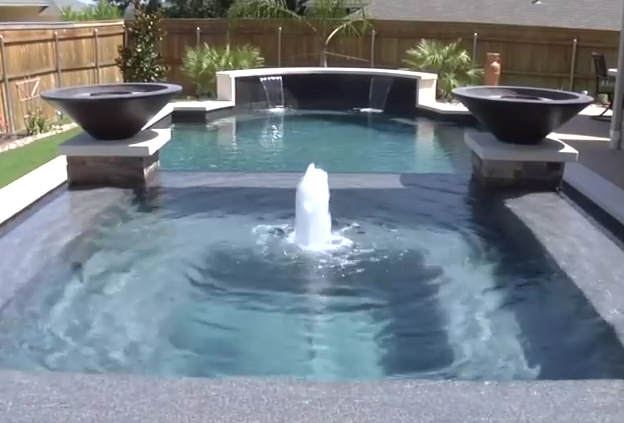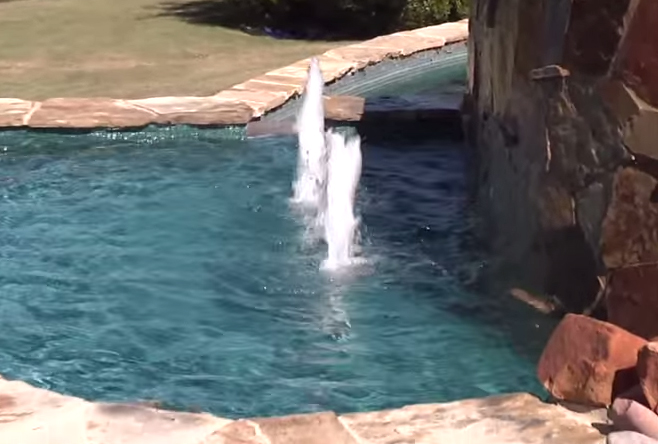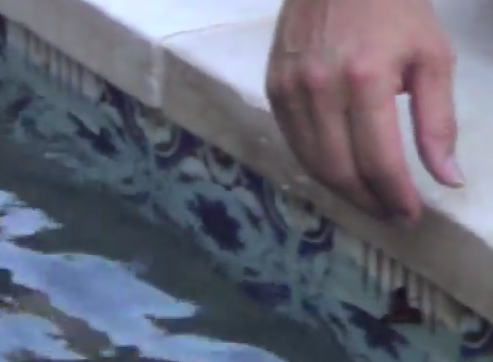Pools & Spas
When I listen to people as they stare at a fountain, I often hear them say, "How wonderful!" In witnessing that praise, however, I know for a fact that what they find appealing is the gracefulness of a sculpture or the beauty of the stone or tile finishes or the way the water flows - what I refer to as the fountain's "façade." In many cases, what's behind that façade can be pretty mundane: maybe a small pump, some simple plumbing, a cascade head or sconce and little more. In other cases, however, what's going on behind the surface is
For almost as long as I've been in business, people who are interested in swimming pools have also usually been interested in having a spa or hot tub to go along with it. It's always been a natural combination, and as watershapers we've found myriad ways to meet thegeneral demand. In the video linked below, I offer a quick discussion of two key factors homeowners need to consider in
When I first became involved with this project, the property was little more than a muddy slope - a dramatic piece of Panamanian topography that nobody had ever considered developing before my clients came along and decided to build a large, custom home. There was a reason it was available to them when they arrived: The building site was a logistical nightmare not only because of the topography but also because of the configuration of the lot. But they
The trouble with conventional approaches is that they can take the creativity out of watershape designs. Almost always, for example, spas are placed directly adjacent to or within the walls of a swimming pool. For a couple generations now, this has led designers to specify open spillways to move water from the spa into the pool, thereby creating a single body of water so far as
Established as a wealthy man's weekend playground, this scenic, seven-acre slice of paradise on the Atlantic side of Islamorada in the Florida Keys is routinely used as the setting for fashion photography, commercials and films because of the archetypal way it expresses the "Keys Lifestyle." I was brought on board by Steve Siskind, the architect who designed the house. (He's done some spectacular residences through the years, but interestingly, he's never lived in a house and instead
In several of the articles I've prepared for WaterShapes, the point has been made that it's not a great idea to apply plaster as the interior finish of a swimming pool (or any other watershape, for that matter) in spells of hot, dry weather - and I thought it was time to dig in a bit deeper and explain the reasoning behind that assertion. Basically, when a layer
When vinyl-liner pools first appeared more than half a century ago, they were offered as "standard" pools for middle-class consumers - plain, simple and relatively inexpensive compared to their concrete cousins. Back in the 1950s and '60s, these vinyl-liner packages had squared-off shapes, but as time passed and consumers demanded greater variety, models emerged with oval forms or Grecian-style ends; before long, there were kidney-shaped packages and even some
Not long ago, I received a call from a young electronics entrepreneur who asked me to come and meet with him about the possibility of adding a swimming pool or spa to his multi-million-dollar hilltop property. The home had been built in the early 1960s, he told me, and he'd just completed a major remodeling project. He also indicated that he knew I was expensive, but that he'd already met with a number of other contractors and wanted to






















